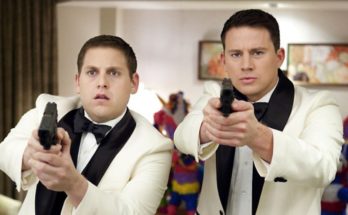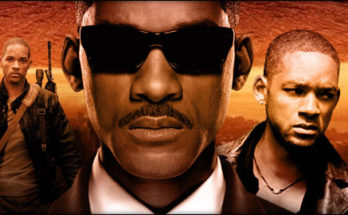A Contrived Code
Critically Reviewing Ron Howard’s “The Da Vinci Code”
Igniting the wrath of many a theologian, monks and cryptographers, the Da Vinci Code doubtlessly sparks fiery debates between a slender line pitching freedom of expression versus religious sensitivity. Post-Mel Gibson’s Passions, Salman’s Satanic Verses, Taslima Nasreen, Theo Van Gogh and the Danish cartoon fiasco the debate leaves a sour an aftertaste. Yet the stench of pushing the envelope is again welcomed with alarming glee.
Political pandering by Jacques Chirac for dishing out roles didn’t bode well with Ron Howard (the architect of opuses as Backdraft, Apollo 13, Cocoon, Far and Away and Ransom) and screenwriter Akiva Goldsman (both worked on A Beautiful Mind). Akiva’s script fuels a baptism of fire. Hollywood seems ever-ready to salt the wounds of controversy and engineer scripts to artistically prostitute anything that feeds the public frenzy and cashes in good profitability and publicity stunts.
Away from the pulpit of polemics, propaganda and protests of plagiarism, the Da Vinci Code seems like a racy rehash of well-worn out themes explored in movies such as “Art Heist, The Last Temptation of Christ, Passion of the Christ, Unlocking Davinci’s Code, Davinci Code Decoded” and countless of their ilk. Thematic lack of originality seldom climbs such pedestal heights!
This nouvelle age blitzkrieg begins with a Louvre gallery’s dead curator scarred by unfathomable symbols etched unto his anatomy like tattoos. From tattoo to Tautou, as in Audrey
( “LesPoupées russes, Dirty Pretty Things and Le Fabuleux destin d’Amélie Poulain”) a coquetishly curious cryptographer, Sophie Neveu, who teams up with a Harvardian symbologist, Robert Langdon (Tom Hanks).
Tasting the fruits of forbidden knowledge, this “Adam and Eve” ensemble peels layered temptation unveiling the truth behind the Holy Grail. Stalking shadows of clues latent in the works of Da Vinci, ingeniously disguised by the painter. Da Vinci’s profane heresy is absurdly over-punctuated in this film.
Langdon wrongly asserts that Da Vinci’s “Mona Lisa” seeks to infer androgyny supported through Egyptian anagrams. No renowned Egyptologist has ever confirmed this. Littering the movie with excruciatingly lose threads.
The Da Vinci Code alleges that Mary Magdalene and Jesus Christ tied the knot engendering a “royal bloodline,” denoting the genuine Holy Grail. Leigh Teabing, played by Sir Ian Mckellen (“Lord of the Rings trilogy, X-Men, Six Degrees of Separation”) is a duplicitous historian alleging that Da Vinci inserted Mary Magdalene into his painting “The Last Supper” and represented the Grail bloodline by dichotomizing Jesus and Mary with a V-contour manifesting the Grail as a womb.
This negates critical analysis held by credible Renaissance art historians who identify the woman in the painting as a young-looking messenger John. The V-contour is a Renaissance technique deployed for artistic poise conveying the notion of “dynamic masses”.
The presumption that Mary and Jesus wedded due to social Jewish decorum du moment supplants empirical evidence that celibacy was a norm amongst the devout. A testimony to this was the celibacy of Prophets Jeremiah, Elijah and John the Baptist.
Predictably, the Opus Dei seek to circumscribe Neveu and Langdon’s inquisitive proclivities. Such exaggerated reprisals are very OTT and the physical confrontational between Silas (Paul Bettany) and Neveu lacks convincing acumen. The Opus Dei, also thirsting for sips of the Priory’s secret do their utmost to keep Langdon and Neveu at bay. Yet their stratagem is too predictable and ill-crafted. Ramping up the plot with such devout inconsistency rebukes serious historical chronicling.
As the countdown heightens to fever-pitch, the question demurs- can the dexterous duo of Langdon and Neveu decipher the inscrutable code? Do they bring to light the Priory’s jealously guarded secret of a heretical bloodline kept hush for generations? Unless Langdon and Neveau connect the conundrum historical accuracy maybe compromised for all times to come.
The cinematography by Salvatore Totino wheezes abruptly and the movie saturates itself by seeking to condense too many themes at once. This film sheepishly masquerades as “fiction” yet pretentiously unmasks itself as “fact”. Tom Hank’s abhorrent geekdom-worthy chemical hair mop, a fake Westminster Abbey (they filmed at Lincoln’s Cathedral), Howard’s omission of Dan Brown’s important foreword and wrongfully misrepresenting the Opus Dei by depicting them as murderers further fuels the film’s mediocrity.
Ideas in the Da Vinci Code are scientifically malnourished, academically anorexic and scholarly famished. Tasteless vitriol spews by popular cinema, ever lax in its’ exercise of critical faculty.
Those serious about de-coding Da Vinci must not only consult a celebrated author or an Oscar-accoladed director but also be versed in Egyptolgy, the Renaissance movement, art history and original Biblical source material.
Innovative films do realign misinterpreted historical truths. Helping rekindle the candle of our understanding. Alan Parker’s “Evita” brought to surface Eva Peron’s shady past. Stephen Gaghan’s “Syriana” demonstrated the sources of patronage and petro-politics. Fernando Meirelles’ “Constant Gardener” unearthed the pharmaceutical industry’s misdemeanors. Steven Soderbergh’s “Traffic” cast a discerning gaze on CIA complots. David Franzoni’s “King Arthur” enlightened viewers on theories about the Knights Templar.
These movies altered perceptions, based not on questionable sources, but verifiable truths. Of course these films are part and parcel of the nebulously subjective Hollywood machine, though they did not over-state the facts.
The Da Vinci Code by blending Bible with Box Office and poorly rehashing discredited theories ill-satisfies those seeking in-depth plot and character development. Re-capitulating formulae wrought with factual inaccuracy replete with tired themes. Rather than trekking an alternate route, Ron Howard treads where Scorsese and Gibson already trail-blazed. Albeit with less dexterity and accuracy.
Post-modernity yet again leaves us at the precipice of waning theological persuasions. There is nothing wrong with such Descartian soul-searching. Though as hurried younger generations hunger for the truth, let them not be driven by the latest fad or movie en vogue but rather cross-reference alternate sources. Our culture and identity-cravers dyslexically starve themselves for new answers to old questions through revisionist theorem.
We must eschew this herd-like mentality, and be the torch-bearers in a winsome original reality-pursuit. Through such distillation reason itself shall dictate if the Da Vinci Code is contrived or conclusive, stoically helping us filter out true chaff from the grain.



